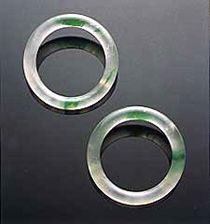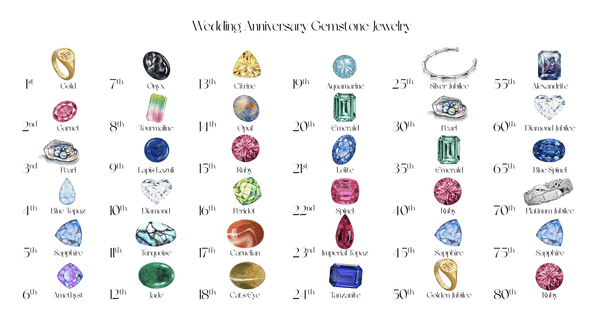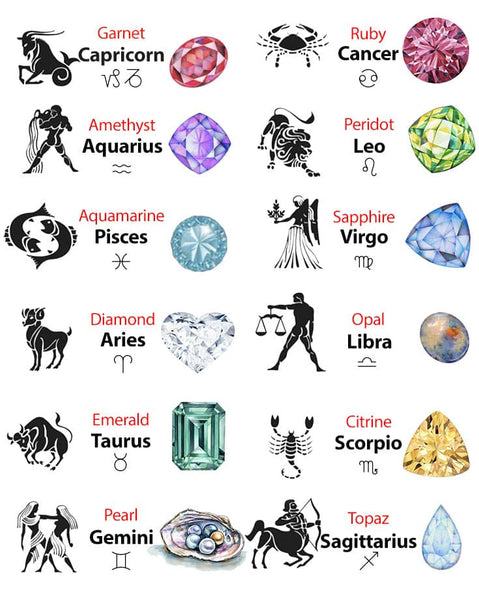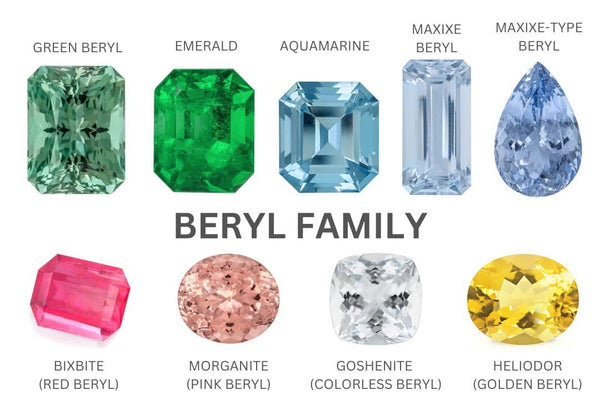Natural Jade Quality

Jadeite and Nephrite: Timeless gems with exceptional value
Jade, also known as Nephrite Jade or Jadeite Jade, has been cherished for over 7,000 years. It wasn’t until 1863 that gemologists discovered jade actually refers to two distinct minerals: Jadeite and Nephrite.
Characteristics of Jadeite and Nephrite
Jadeite Jade:
- Colors: Ranges from vibrant green, white, pink, red, black, brown, to purple. The most valuable color, Imperial Green Jade, is exclusive to Jadeite.
- Transparency: Higher than Nephrite, with superior luster.
- Hardness: 6.5 - 7.0 on the Mohs scale.
- Sources: Predominantly from Myanmar (Burma), with deposits in Russia, Canada, Japan, and the USA.
Nephrite Jade:
- Colors: Medium to deep green, greyish green, white, yellowish, or light red.
- Hardness: 6.0 - 6.5 on the Mohs scale.
- Sources: Found in China, South Korea, New Zealand, Australia, Canada, Russia, and the USA.
Jadeite vs. Nephrite – A comparison
- Jadeite is rarer and more valuable than Nephrite.
- Imperial Green Jade, known for its vibrant green hue created by chromium, rivals the finest emeralds.
- Natural Jadeite Type A, untreated and entirely natural, is the most highly sought-after variety.
Craftsmanship
Jade is renowned for its polished surface and radiant luster. While not transparent, its beauty is best showcased through Cabochon cuts, commonly used in bangles, beads, artistic carvings, and decorative objects.

Natural Maitreya Buddha Nephrite Jade Pendant Necklace in 14K Yellow Gold by AME Jewellery
The Legend of Jade – A Gem of power and Eastern cultural symbolism
With its timeless beauty and captivating appeal, jade has fascinated humanity for thousands of years. More than just a gemstone, jade holds profound cultural, historical, and spiritual significance across the globe.
Jade in Confucian philosophy and Chinese culture
In Confucian philosophy, jade symbolizes virtue, with its luminous sheen representing the heavens. The character 玉 (Yù) – meaning jade – is one of the oldest written symbols in Chinese, dating back to 2950 BCE.
Initially, jade was prized for its durability, making it ideal for crafting tools and weapons. Later, in Chinese culture, jade became known as the “Royal Gem”, holding a revered place in royal art and customs. Jade was not only used in sacred rituals but also as treasures for members of the imperial family.
Nephrite and Jadeite in Chinese History
All traditional Chinese jade is nephrite, as China has abundant nephrite deposits but no jadeite. For this reason, the term "jade" often refers to nephrite jade.
Jadeite was first introduced to China from Myanmar in the 18th century. Before its arrival, the Chinese highly valued translucent white nephrite. However, Burmese jadeite offered a broader range of colors, including green, lavender, yellow, black, and white.
Jade in other civilizations
- Pre-Columbian America: Among the Maya, Aztec, and Olmec civilizations, jade was revered even more than gold, symbolizing power and divinity.
- Ancient Egypt: Jade was cherished as the stone of love, peace, and harmony.
- In Asia, jade is collected as a valuable antique.
- Europe and the Americas: In modern times, jade has been used for crafting medicine boxes, pipes, small bowls, and bangles. Shades like pure white, soft yellow, and pale pink are particularly admired, while apple green and emerald green are highly valued.
Symbolism of Jade today
Jade is celebrated not only for its beauty and value but also for its spiritual and energetic qualities. It is considered a representation of:
- Confucian Virtues: Purity, wisdom, justice, compassion, humility, and courage.
- Balance and Harmony: Promoting creativity, mental flexibility, and emotional equilibrium.
Jade brings joy, vitality, and happiness. It is also seen as a symbol of feminine allure, making it a perfect gift for those seeking a harmony of beauty and soul.

Key factors that define Jade Quality
Understanding the value of jade goes beyond its durability and aesthetic appeal. Evaluating jadeite, the most sought-after type of jade, requires consideration of several critical factors, including color, transparency, texture, cut, and size. These qualities collectively determine its allure and market value.
1. Color: The most important value factor
Color is the most significant determinant of jadeite's value. While traditionally associated with green, jadeite comes in a variety of colors, including lavender, red, orange, yellow, brown, white, black, and gray. Among these, Imperial jade – a vibrant, nearly transparent emerald-green hue – is the most prized and expensive.
- Imperial Jade: This top-tier variety features a pure, intense green without gray undertones. It remains highly coveted in the Asian market and commands millions of dollars for exceptional pieces.
- Kingfisher Jade: Slightly less vivid green than Imperial.
- Apple Jade: A bright yellowish-green hue.
- Moss-in-Snow Jade: Translucent white jadeite with striking green veins or patches.
In general, jadeite with rich, even, and intense colors is highly valued. Lavender is the second most desirable color, followed by shades of black, orange, and reddish jade.

Jadeite jade comes in a variety of colors. Green is the most valuable. - GIA
2. Transparency: A marker of brilliance
Transparency plays a key role in enhancing jadeite’s appearance. Its range spans from opaque to semitransparent, with the latter being the most desirable.
- Semitransparent Jadeite: Light penetrates beneath the surface, creating a glowing effect and adding depth to the stone’s color.
- Opaque Jadeite: Lacks the brilliance and allure of transparent varieties.
Jadeite with high transparency often compensates for uneven coloration or less saturated colors, boosting its value. A common test involves placing a thin slice of jadeite over printed text—better transparency allows the text to appear slightly blurred but visible.

Most marble is opaque, very little is semi-transparent. In the picture, the leftmost three are opaque, then the translucent one, the rightmost one is the clearest (semi-transparent). 
This pair of "grass" jadeite bangles is extremely rare. Both have an inner diameter of 53.4 mm and a thickness of 9.6-9.7 mm. This pair of jade bangles is almost colorless and has emerald green spots. Especially the transparency is very high, so it is called "glass" jadeite. (Picture of Christie Hong Kong and Tino Hammid)
The size and uniformity of the microcrystals significantly influence the transparency of jadeite. Stones with medium to coarse grains tend to appear more opaque, whereas those with extremely fine and consistent grains exhibit higher transparency. In the market, jadeite with exceptional transparency is often referred to as "glass" jade. From a value perspective, the greater the transparency, the higher the jadeite's worth.
3. Impurities
Impurities in jade refer to materials that are not part of the primary minerals making up the stone, such as jadeite or nephrite. While these impurities are not visible to the naked eye, they can be detected through the stone's transparency and color.
- Pure Jade: Jade with a high content of jadeite or nephrite tends to have better transparency and more uniform coloration.
- Impact of Impurities: Impurities such as brown, gray, or black inclusions can diminish the stone’s beauty and lower its value.
To determine whether a stone is jade and to classify it as jadeite or nephrite, methods such as specific gravity testing or absorption spectroscopy are used.

Jadeite is a multi-mineral stone, with many impurities, so most of it is uneven in color. The image above shows the level of color evenness increasing from right to left.
4. Texture: The feel of fine jade
Jadeite's texture reflects the arrangement of its interlocking crystals. Finer textures not only enhance the stone’s appearance but also improve its durability.
- Fine Texture: Smooth and compact with an even grain, often referred to as "old mine" jadeite.
- Medium to Coarse Texture: Can appear rougher and less lustrous.
The interlocking structure of jadeite crystals contributes to its legendary toughness, a quality that made it ideal for ancient tools and weapons.
5. Fractures in Jade
Definition and Formation: Fractures in jade include tiny voids and cracks:
- Microscopic Voids: These are formed at the boundaries between jade's fine grains and fibers.
- Natural Cracks: They can result from natural compressive forces during the stone’s formation or from handling, processing, and daily use.
- Material Fill: Naturally occurring small cracks often contain filler materials, creating impurities that differ in color from the base stone and disrupt its uniform appearance.
Impact of Fractures:
- Minimal Impact: Tiny voids usually have little effect on durability.
- Significant Impact: Larger cracks can compromise the stone’s strength. Jade is inherently tough and resistant to chipping or breaking, but significant cracks make it more prone to splitting or shattering upon strong impact, especially in jade bangles, which are more vulnerable to collisions.
Treatment and Examination:
- During crafting, artisans often fill small cracks with glue or wax to mask imperfections, making them invisible to the naked eye, even under 10x magnification.
- Advanced gemological tools are required to detect these fractures and assess their impact on the jade’s overall quality and value.
6. Cut: Maximizing beauty and value
The skillful cutting of jadeite highlights its natural beauty while preserving as much material as possible.
Cabochons: Rounded, polished stones commonly used in rings and other jewelry. High-quality cabochons are judged by symmetry, proportion, and thickness.
Beads: Strung into strands, requiring careful matching of color, texture, transparency, and size. Longer strands or larger beads are particularly valuable.
Bangles: Carved from single pieces of jadeite (hololiths), these are among the most iconic jade jewelry items. Hololith bangles are more expensive due to the significant weight loss during carving.
Chinese Eternity Symbols / Donut circle Jade (Bi): Simple round disks with a central hole, valued for their spiritual significance. Fine jadeite is often fashioned in traditional forms such as rings, pendants, and saddle rings. Uniform color and smooth finishes elevate the value of these pieces.
7. Size and Weight: Impact on value
The size of jadeite is measured in millimeters, with larger pieces generally commanding higher prices if other quality factors are equal. For Imperial jadeite, even slight differences in size can lead to significant variations in value.
Conclusion: The Allure of High-Quality Jade
Jadeite’s value is determined by a harmonious balance of its color, transparency, texture, cut, and size. Among these, the vibrant green of Imperial jadeite, paired with semitransparency and fine texture, stands as the pinnacle of jade quality. Whether fashioned into a bangle, cabochon, or bead, jadeite remains a timeless treasure that reflects both cultural heritage and exceptional craftsmanship.




